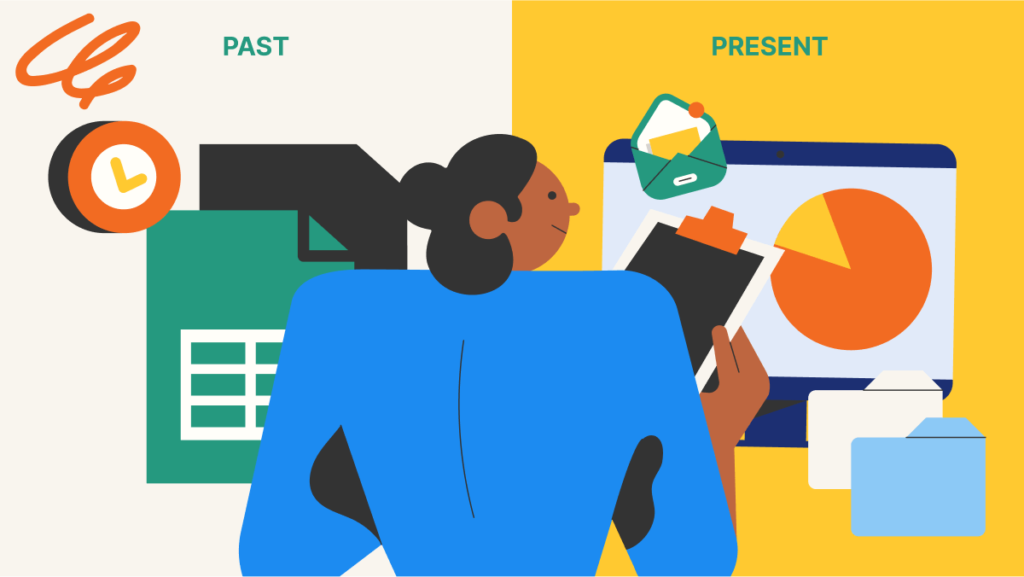Once upon a time, there was a six-year-old version of you. I know, it was a while ago for me too, but I invite you to remember what it was like to be full of curiosity, asking “why?”’ at every turn, filled with boundless energy, and always eager for new adventures. Shall we climb through that wardrobe to Narnia or jump on the magic train to Hogwarts?
Or, what about somewhere closer to home, but with equally interesting creatures and new, exciting customs? If that intrigues you, welcome to the land of Diversity, Equity and Inclusion (DEI).
Your sense of wonder has a place in DEI land. Over the years, we all acquire beliefs, experiences, and ways of seeing the world that wire into our brains, creating conscious and unconscious biases. Embarking on the DEI maturity journey with the same childlike attribute, we permit our adult selves to be curious about our differences, taking the journey on with an essential innocence.
You’re ready, now what about that company of yours?

Red flags on the DEI journey
Unfortunately, many work environments don’t make it easy to bring our whole selves to work. In Singapore, 72% of employees find DEI efforts to be lacking. How can organisations do better?
In DEI land, some paths lead to success and others to dead ends. We want to avoid the dark forests and move towards the light of belonging. To get a vantage point to see both clearly, we climb aboard a hot air balloon to reveal what is invisible from the ground. Can you spot the “red flags” that will damage systemic DEI efforts?
- Top leaders are not committed to DEI
- DEI efforts are superficial and token gestures
- Discriminating behaviours are not called out
- Overt resistance to change is allowed and goes unchecked
- Support and resources are underestimated or inadequate
- Policies and practices are outdated and not reviewed
- There is no sense of importance or urgency to act
- Communication is generic and sporadic, unrelated to company issues
- There is no system of measurement for goals to track the direction
- The focus is on stand-alone initiatives not integrated with culture change
Learn more about red flags in DEI here.
Approaches to DEI
There’s no one-size-fits-all solution for your company’s DEI journey. As a coach, I like taking a diverse approach to culture transformation with my clients. That involves combining the following approaches:
- Top-down (leadership-driven)
- Bottom-up (grassroots-driven)
- Horizontal (breaking the silos across groups)
Combining all three approaches is the most powerful. A bottom-up approach is a great way to innovate organically, but without a boost from company leaders, systemic traps may still be in the way. Together, managers and team members can make progress by building both across and upwards.

The DEI maturity spectrum
There is no silver bullet, but thanks to Ella Washington, an organisational psychologist and professor whose DEI maturity spectrum was featured in Harvard Business Review, we can understand where your organisation is on the DEI pathway.
Having worked with hundreds of companies – from Bestbuy to PwC – over four decades on DEI, Washington identifies five predictable stages of DEI maturity: Aware, Compliant, Tactical, Integrated, and Sustainable.
Stage 1: Aware (14% of companies)
“DEI is new to my organisation, and we’re just becoming aware of its importance.”
According to Washington, organisations in this stage typically belong to two main categories: established organisations that have overlooked DEI or startups with little bandwidth to establish robust human-capital practices—until a triggering event occurs.
While their foray into DEI may seem like a positive outcome amid a crisis, there’s a risk of making grand, sweeping statements about the intended changes, veering into performative actions and potentially leading to failure. In such a situation, employers are advised to introspect and pose critical questions to themselves:
- Why does DEI matter to us personally?
- Where do we want to go?
Other questions I encourage managers and team members to think about—both individually and collectively—are:
- What does diversity mean to you?
- Why do you have that view?
- How does it differ from others’?
- What is your best (and worst) DEI experience and why?
- What is it like to be a part of an Employee Resource Group (ERG)?
- What’s working well to create a sense of belonging?
- What can be even better?
- What’s the senior management doing in the DEI space?

Stage 2: Compliant (31.6% of companies)
“Our DEI efforts are focused on compliance with EEOC and other legal requirements.”
The difference at this stage is between “done” and “done well,” and how survey questions are asked makes a huge difference. For example, some respondents may have chosen not to answer questions about disabilities, hinting at a lack of psychological safety. To address your employees’ reluctance to respond, consider enlisting the support of underrepresented communities upfront before surveying.
Furthermore, what appears as a simple question to one culture, race, or identity may be received differently from another. To reflect these nuances and other norms in your organisation, you’d need to involve diverse communities in reviewing and even contributing to the survey’s design. You’ll learn a lot even before sending the survey out for completion, and get a more accurate benchmark too.
Stage 3: Tactical (15.6% of companies)
“DEI has been connected to our business initiatives and outcomes in pockets of the organisation.”
It doesn’t stop at courageous conversations on International Women’s Day and during Pride Month. In fact, Washington warns that organisations are most prone to backsliding at the tactical stage if their DEI efforts do not complement existing practices. (For starters, are your ERGs getting regular facetime with your senior leaders?)
Before coming up with new solutions, look out for ways in which existing policies may be sabotaging your DEI efforts. Here’s an example of how a seemingly innocuous policy may be maintaining systemic barriers:
In January 2022, Future Forum Pulse reported in the USA, “86% of Hispanic/Latinx knowledge workers and 81% of Asian/Asian American and Black knowledge workers prefer a hybrid or fully remote arrangement, as compared to 75% of white knowledge workers.”
Do opportunities vary if you’re remote or in-office working? They sure do. It’s called “proximity bias” – a top concern for 41% of executives (up from 33%). An organisation may not connect the dots between hybrid/remote work arrangements and DEI efforts immediately, but that doesn’t mean there are no implications.

Stage 4: Integrated (22.7%)
“DEI is part of everything we do as an organisation, we have both internal and external efforts on DEI.”
At this stage, organisations are integrating their DEI efforts with external stakeholders, walking the talk that “DEI is part of everything we do.” Washington provides a case study of Denny’s, the American restaurant chain that faced discrimination lawsuits and scandals in the nineties. Forced to address their practices and policies, the company embarked on mandatory diversity training and publicly tracking their efforts.
Rather than getting stuck in the compliance stage, they doubled training efforts, introduced a toll-free number so others could help identify problems, and tackled bias in its recruitment practices. Senior manager incentive bonuses were also tied to advancing the interests of women and minorities. 30 years on, Denny’s not only repaired its reputation but also won a spot on Newsweek’s list of Best Places to Work.
Stage 5: Sustainable (16%)
“DEI efforts are best-in-class and remain strong over time through our efforts to continuously improve and evolve.”
“Companies here have DEI efforts that stand the test of time, external scrutiny, as well as economic and leadership changes. Leaders embrace a growth mindset, and DEI is seamlessly integrated into the organisational way of life. The management is consistently attentive to new DEI challenges, such as expanding into new global markets, and seizes opportunities to infuse more diversity into the organisational culture.

Green flags on the DEI journey
As we get ready to leave, let’s take a final scan of DEI land. Grab your binoculars and let’s find these successful efforts of DEI:
1. Stronger commitment from leaders
You’ll see these leaders leading from the front and actively involved in conversations while remaining open to challenges. They maintain a childlike curiosity for creating new ways the company embodies inclusion.
Pro-tip: When I’ve worked with senior leaders, nothing focuses the mind and action more than KPIs, ideally with performance pay at risk. If you want DEI to feature prominently at the top tier, invest your money there.
2. Increase in engagement and employee experiences
Open communication helps ensure that individuals have equitable access to opportunities. Engagement and employee experiences are qualitative and more accurately assess success than simple quantitative metrics that merely tick a box.
Pro-tip: Holding focus groups with staff, facilitated by independent facilitators, can produce great insights and uncover blind spots that may be missed in quantitative surveys. Both quantitative and qualitative data together provide the best picture of what’s really happening.
3. Evolution in practices and policies
It is essential to review and adjust touchpoints (think recruitment, promotion, products, community presence – the list goes on) and bring the words on a page to life with action. For example, Employee Resource Groups (ERGs) need follow-through actions, such as regular meetings with executives who are willing to listen and respond.
Pro-tip: Policies can facilitate the set-up of ERGs, but bear in mind that it isn’t solely an HR-driven initiative. In other words, companies shouldn’t mandate that the women’s or LGBTQIA+ group meets on Wednesdays, as ERGs work best when driven by the populations they represent and serve. If a company policy enables ERGs and they aren’t happening, it’s time to ask what’s standing in the way.

The DEI finish line
Sorry, there’s no “the end” with DEI. Like Dr. Seuss and The Places You’ll Go book, there are new places to explore and people to meet. An inclusive workforce isn’t the result of a program, as Washington reminds us in her book The Necessary Journey: Making Real Progress on Equity and Inclusion (HBR Press, 2022). It requires “invention and reinvention, mistakes and humility, adaptation to a changing world, constant reflection, and sometimes significant sacrifice.”
That journey is made lighter when you bring your childhood curiosity and continue despite the challenges you will inevitably face in any meaningful adventure. Be bold, be patient, and be courageous. Gather the stories of your company’s journey and create your unique DEI experience.








